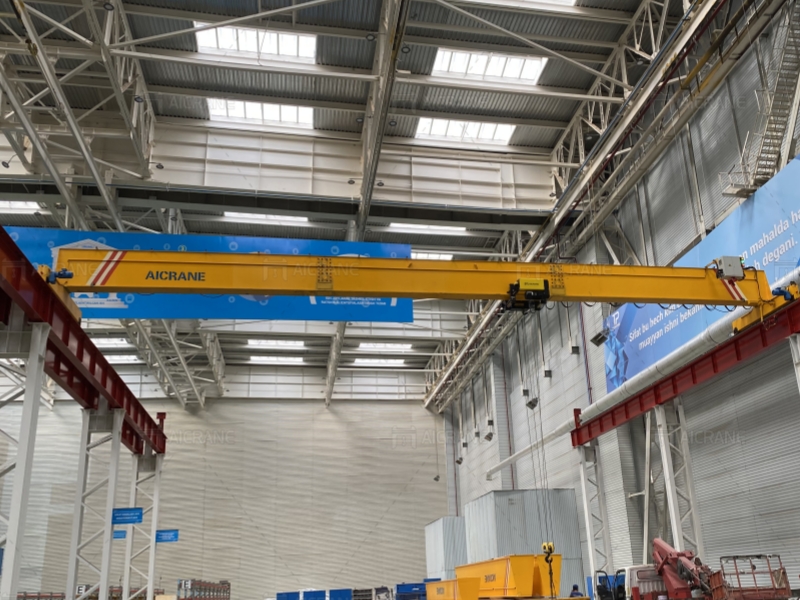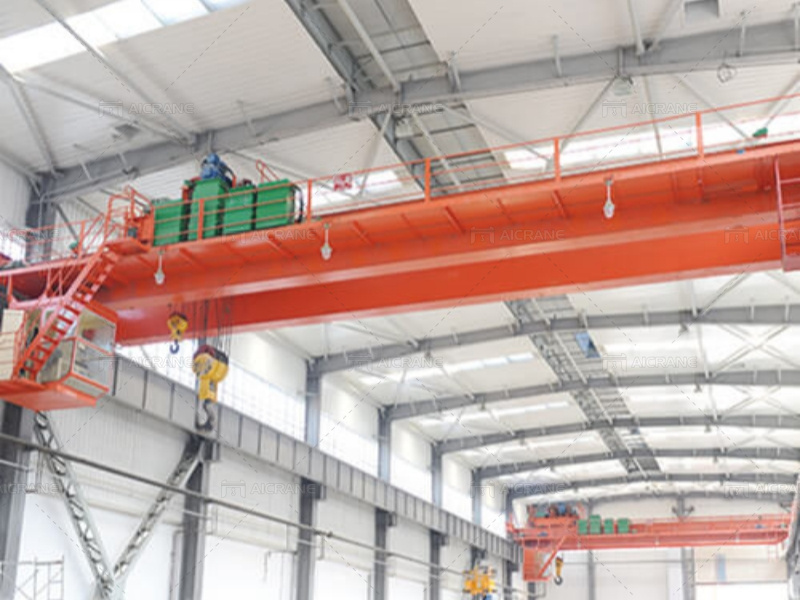Overhead cranes are crucial equipment in various industries, facilitating the movement of heavy loads with precision and efficiency. To ensure optimal performance and minimize downtime, proper maintenance is essential. In this article, we’ll explore maintenance tips and best practices to maximize efficiency and improve the performance of overhead cranes.
Regular Inspections
Routine inspections are critical for identifying potential issues early on and preventing costly breakdowns. Inspect components such as wire ropes, hooks, brakes, and electrical systems for signs of wear, damage, or malfunction. Establish a schedule for daily, weekly, and monthly inspections to maintain the crane’s operational integrity.
Lubrication
Proper lubrication of moving parts is essential for smooth operation and longevity of the crane. Apply lubricants to bearings, gears, wheels, and other components as recommended by the manufacturer. Regularly check lubrication levels and replenish them to ensure optimal performance and reduce friction-related wear.

Electrical System Maintenance
The electrical system of an overhead crane requires regular maintenance to ensure safe and reliable operation. Inspect cables, connectors, switches, and control panels for signs of damage or deterioration. Clean and tighten connections, and replace worn components promptly to prevent electrical failures and ensure uninterrupted operation.
Structural Integrity Checks
Regular structural inspections are vital for ensuring the safety and stability of the crane. Examine the crane’s structural components, including beams, columns, and joints, for signs of corrosion, cracks, or deformation. Perform load tests periodically to verify the crane’s structural integrity and load-bearing capacity.
Operator Training
Proper training for crane operators is crucial for safe and efficient crane operation. Ensure operators are trained in equipment operation(Кран мостовой электрический), safety procedures, and emergency protocols. Regular refresher courses and ongoing training sessions help operators stay updated on best practices and maintain proficiency.
Component Replacement
Proactively replace worn or damaged components to prevent equipment failure and downtime. Keep an inventory of spare parts on hand and replace components such as wire ropes, sheaves, and brakes according to manufacturer recommendations or as needed based on inspection findings. Promptly address any issues identified during inspections to maintain optimal performance.
Environmental Considerations
Consider environmental factors that may affect crane performance and longevity. Protect the crane from exposure to extreme temperatures, moisture, and corrosive substances. Implement preventive measures such as rust-proof coatings, climate-controlled storage, and regular cleaning to extend the crane’s lifespan and ensure reliable operation.
Documentation and Record-Keeping
Maintain detailed records of maintenance activities, inspections, and repairs. Documenting maintenance tasks helps track the crane’s maintenance history, identify recurring issues, and plan future maintenance schedules. Keep records organized and easily accessible for reference during inspections, audits, or equipment evaluations.
Continuous Improvement
In addition to regular maintenance tasks, fostering a culture of continuous improvement is essential for optimizing overhead crane performance(мостовой кран 100 тонн). Encourage feedback from crane operators and maintenance personnel to identify areas for improvement in maintenance procedures, equipment design, and operational efficiency. Implementing suggestions for process enhancements, technological advancements, and workflow optimizations can lead to incremental improvements in crane performance over time.

Advanced Technologies
Embracing advanced technologies can revolutionize overhead crane maintenance practices and enhance overall performance. Explore the integration of predictive maintenance technologies such as remote monitoring systems, condition-based monitoring sensors, and machine learning algorithms. These technologies enable real-time monitoring of crane health, early detection of potential issues, and predictive analytics for optimized maintenance scheduling. By leveraging advanced technologies, organizations can proactively address maintenance needs, minimize downtime, and maximize crane efficiency.
Data Analysis and Decision-Making
Utilize data analysis techniques to derive actionable insights from maintenance data and performance metrics. Analyze maintenance records, equipment utilization patterns, and failure trends to identify opportunities for optimization and efficiency gains. Make data-driven decisions regarding maintenance prioritization, resource allocation, and equipment upgrades. By harnessing the power of data analytics, organizations can make informed decisions that drive continuous improvement in overhead crane maintenance practices and maximize performance.
Supplier Collaboration
Collaborating closely with crane manufacturers(продам мостовой кран) and suppliers can provide valuable support in optimizing maintenance practices. Engage with suppliers to understand recommended maintenance procedures, access technical support, and obtain genuine spare parts. Leverage supplier expertise to address complex maintenance challenges, implement equipment upgrades, and stay informed about industry advancements. Building strong partnerships with suppliers fosters mutual trust and enables organizations to benefit from the latest innovations in crane maintenance technology.
Maximizing efficiency in overhead crane maintenance requires a multifaceted approach that encompasses continuous improvement, advanced technologies, training and skill development, data-driven decision-making, and supplier collaboration. By incorporating these additional strategies into maintenance practices, organizations can enhance crane performance, minimize downtime, and ensure safe and reliable operation of overhead cranes in various industrial applications. Prioritizing continuous improvement and leveraging technological advancements position organizations for success in optimizing overhead crane maintenance and achieving operational excellence.